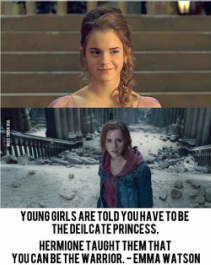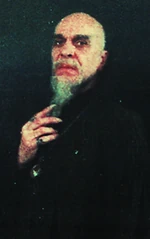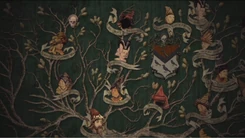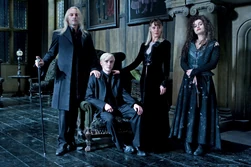Rivers and Tides: Andy Goldsworthy Working with Time
Rivers and Tides: Andy Goldsworthy Working with Time is the most spiritually literate documentary you will see this year. It won the Golden Gate Award Grand Prize for Best Documentary at the 2003 San Francisco International Film Festival. The DVD includes a gallery of images so you can see again the sculptures that caught your eye; and filmography of German director, cinematographer, and Editor Thomas Riedelsheimer; and a brief biography of Andy Goldsworthy, which lists his books. This extraordinary documentary will enchant you in many ways with its startling images, its exotic music by Fred Firth, and its ability to stimulate your inner artist, who will likely begin dreaming up creative projects to do with all the materials at hand around your own place.
Andy Goldsworthy makes sense-luscious sculptures entirely out of things he finds in nature — stones, twigs, leaves, plant stalks, clay, ice, snow. In this meditative 90-minute documentary by Thomas, Goldsworthy is seen working on new creations. As he explains his philosophy that brings together a Zen-like appreciation of the natural world, a deeply felt connection with the Earth and all its thousand things, a fascination with time and the ephemeral existence of objects, respect for place and all the marvels discovered within a space. One knows intimately, and a yearning to explore the energy that is running through the landscape. Sometimes his works change before our eyes and even pass away before we have savored all their mystery and magic. However, to the artist, this is all part of the process.
"Art for me is a form of nourishment," Goldsworthy says, and we see what he means as he begins to assemble his earthwork arrangements. Arriving for a new commission in Nova Scotia, he has only a little time to familiarize himself with the seaside terrain. Still, he establishes camaraderie with the natural world: "I've shaken hands with the place," he declares as he begins to work on an icicle sculpture that fits perfectly with the chilly and desolate milieu. Goldsworthy respects the processes of life and death reflected in nature. As the sun illuminates the finished sculpture, he notes, "The very thing that brought it to life, will bring about its death." This is only one of the many spiritual insights emerging from his art.
Goldsworthy comments on his "earthworks", he occasionally responds to off-screen questions from Riedelsheimer. While he painstakingly builds his outdoors sculptures. With some exceptions, such as a winding stall, that he built in Mountain vile, NY, Goldsworthy's creations are intentionally mutable works.
We see how several of them fall apart, melt, or drift away due to exposure to the elements; we also see, for example, a complex structure of interconnected sticks collapse while Goldsworthy is still working on it. Riedelsheimer takes us to Goldsworthy's home in Pen port, Scotland, and to a French museum, but the emphasis of the film is on observing Goldsworthy at work.
D. H. Lawrence said wonder was the sixth sense and called it "the natural religious sense." You cannot watch this documentary without being astonished again. Goldsworthy opens our eyes and all of our senses to the beauty and the multiple enchantments of the natural world that we so often take for granted. He is also a spiritual teacher of play, demonstrating a child-like capacity for curiosity. He seems to enjoy kneeling down in the mud or creating something in the face of a cold stiff wind. He does not worry about who will see his art or whether it will stand the test of time. He accepts failure as part of the learning process and moves on to new challenges.
Goldsworthy's art demonstrates this lesson -- that one must acknowledge both life and death in order to know a place -- through its construction and design, using the processes of the present to connect with both the past and future. For a piece in Nova Scotia, he locates a fishing hole that is empty of water due to low tide and takes driftwood from the shore to construct a dome, its shape emulating the circulating eddies of the river. After the piece is "completed," a local villager wanders by, explaining that this fishing hole used to be a good place to fish for carp when the villager was a child. Here we see a symbiosis between Goldsworthy's intuitive understanding of the landscape and the personal history of one of its inhabitants.
Yet, calling the artwork "completed" at this stage is a misnomer, since Goldsworthy had specifically designed it so that high tide would lift the sculpture into the river, where currents would reshape its structure. A long overhead shot follows, showing the tide taking up the structure and slowly pulling it out. The dome's shape mirrors the circular movement of the river as the pieces of wood slowly drift apart, movement and shape becoming one. But rather than merely destroying the structure, the river's movement heightens its beauty as the water interweaves into its framework. In voiceover, Goldsworthy observes, "It feels like it's being taken off into another plane, taken off into another world, or another work. Doesn't feel at all like destruction."
Goldsworthy's piece exposes the futility of asking whether he/the artist or nature is responsible for the piece's beauty, which depends on their interpenetrations, of art and nature, creation and destruction. The slippage between art and nature leads viewers to realize that the "art work" is as much a part of its surroundings as the surroundings are a part of the "work." This is perhaps best exemplified by the film's closing images, various shots of miraculous vapors twirling before us, light scintillating through them, obeying their own laws of motion and color. A cut reveals that Goldsworthy is simply picking up snow and throwing it. Never has the world seemed so new.
Hopefully, Rivers and Tides release on DVD will introduce it to wider audiences than its limited U.S. theatrical release garnered in 2003. The DVD provides seven additional short films, offering extended footage of the featured artworks. Just as Goldsworthy's work uses the flow of time to show art's interconnection with life, Rivers and Tides illustrates cinema's intimate connection with the natural world, so that technology and so-called nature become part of one mesmerizing process.
Click below to watch the Documentary.

















